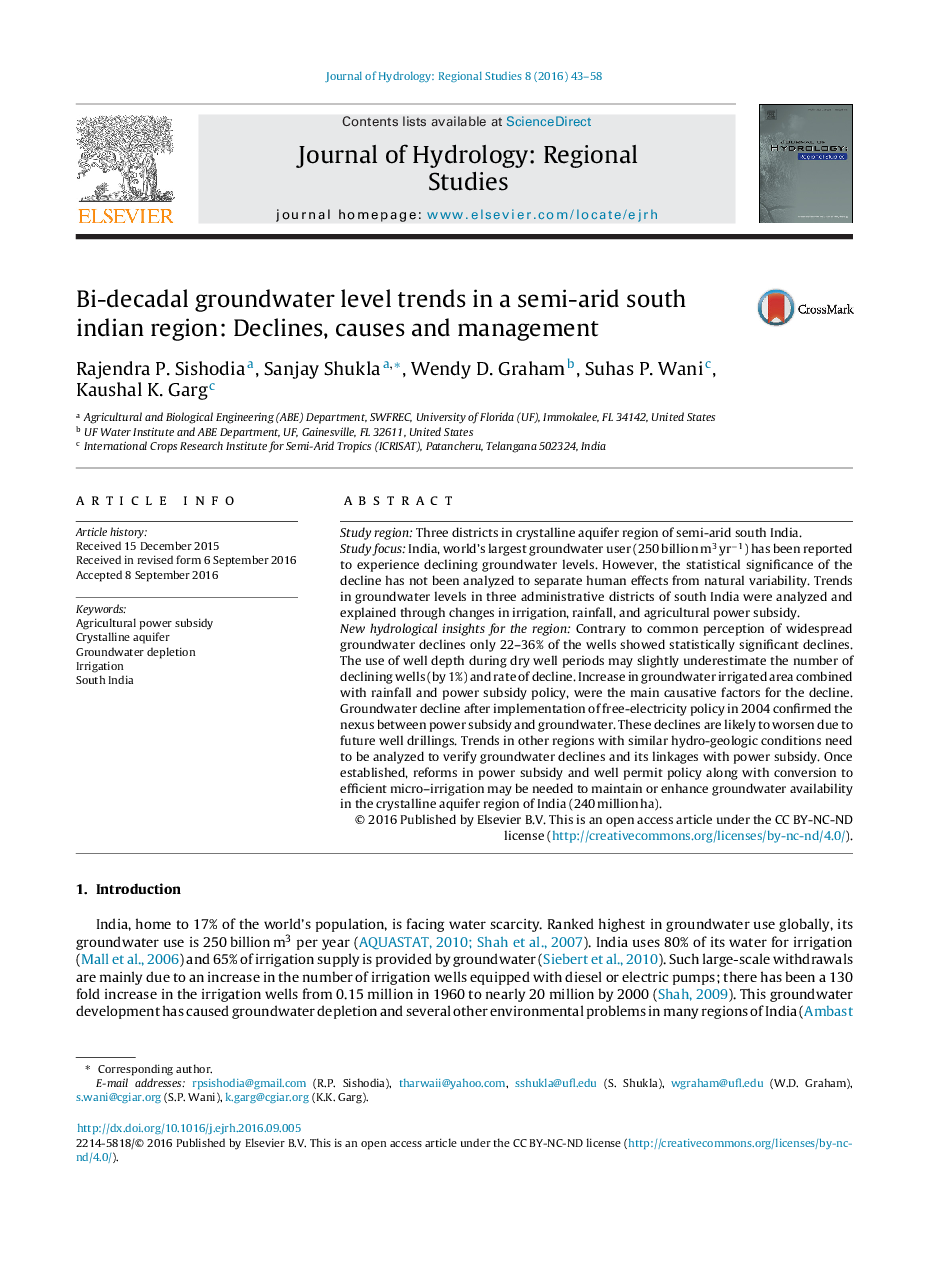| Article ID | Journal | Published Year | Pages | File Type |
|---|---|---|---|---|
| 4435064 | Journal of Hydrology: Regional Studies | 2016 | 16 Pages |
Study regionThree districts in crystalline aquifer region of semi-arid south India.Study focusIndia, world’s largest groundwater user (250 billion m3 yr−1) has been reported to experience declining groundwater levels. However, the statistical significance of the decline has not been analyzed to separate human effects from natural variability. Trends in groundwater levels in three administrative districts of south India were analyzed and explained through changes in irrigation, rainfall, and agricultural power subsidy.New hydrological insights for the regionContrary to common perception of widespread groundwater declines only 22–36% of the wells showed statistically significant declines. The use of well depth during dry well periods may slightly underestimate the number of declining wells (by 1%) and rate of decline. Increase in groundwater irrigated area combined with rainfall and power subsidy policy, were the main causative factors for the decline. Groundwater decline after implementation of free-electricity policy in 2004 confirmed the nexus between power subsidy and groundwater. These declines are likely to worsen due to future well drillings. Trends in other regions with similar hydro-geologic conditions need to be analyzed to verify groundwater declines and its linkages with power subsidy. Once established, reforms in power subsidy and well permit policy along with conversion to efficient micro–irrigation may be needed to maintain or enhance groundwater availability in the crystalline aquifer region of India (240 million ha).
